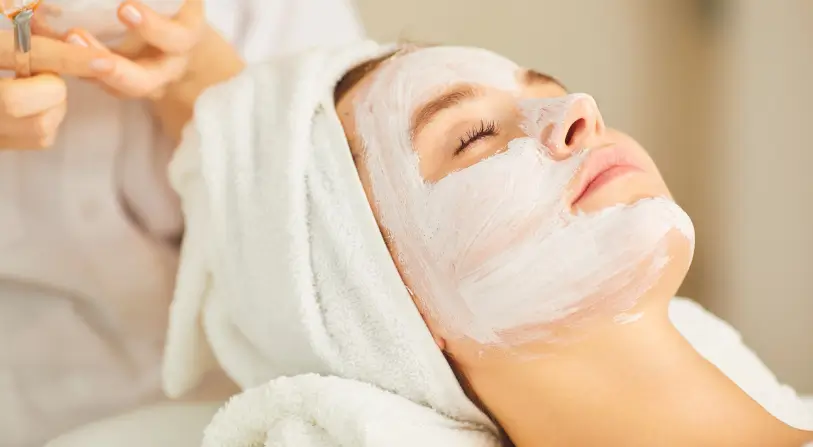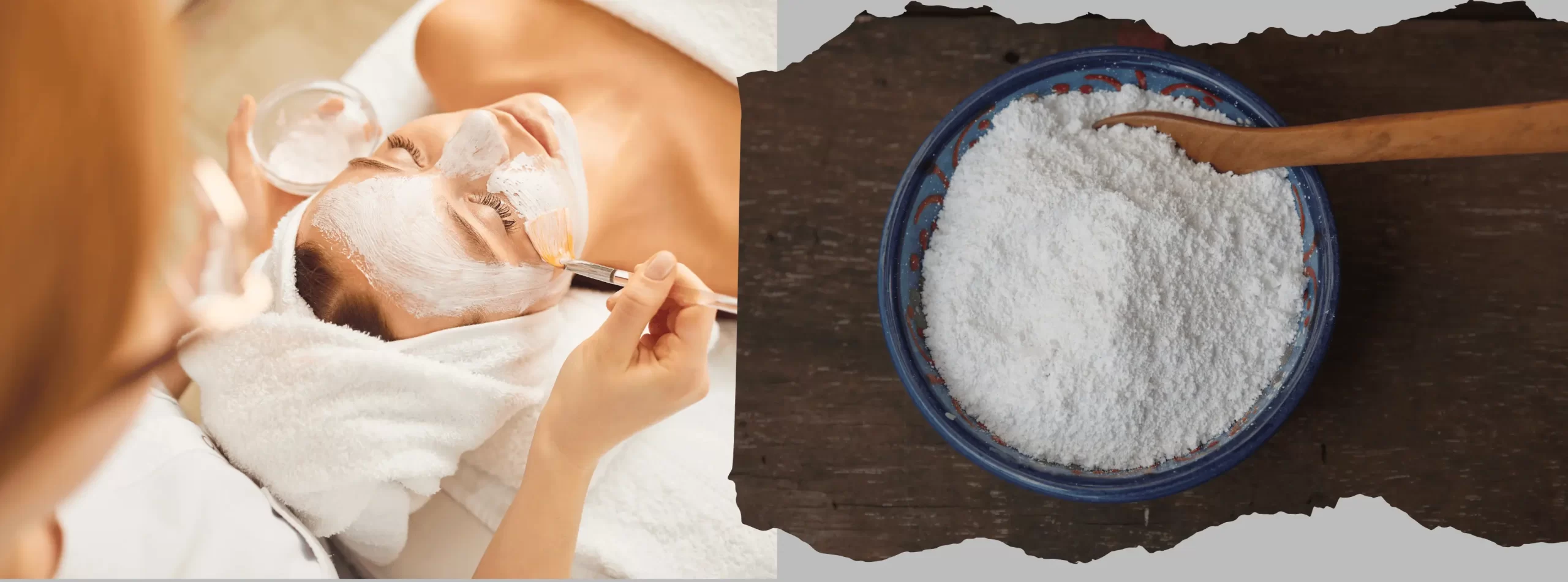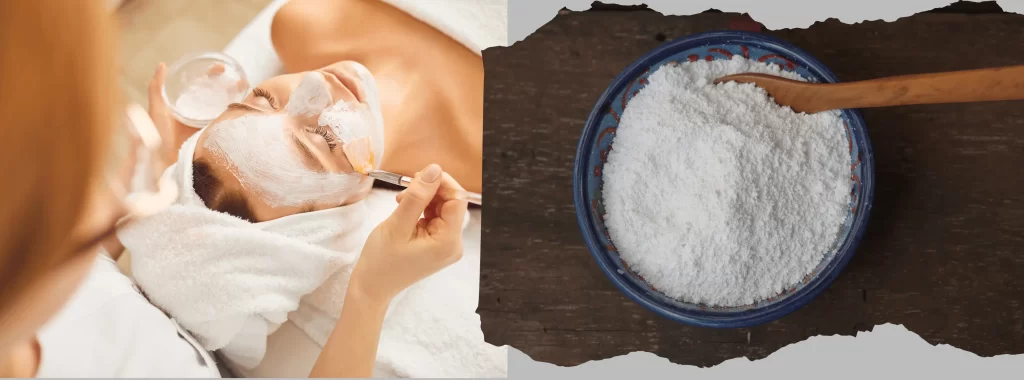White Clay: The Science Behind Its Skin Purifying Properties
Introduction: The Power of White Clay in Skincare
In the world of natural skincare, few ingredients have stood the test of time like white clay—a gentle, mineral-rich substance cherished for its transformative effects on the skin. Also known as kaolin clay, this powerhouse ingredient has been used for centuries across various cultures to cleanse, detoxify, and rejuvenate the skin.
What sets white clay apart is its unique ability to purify without irritation. Unlike harsher exfoliants or treatments, it works subtly yet effectively, drawing out impurities, excess oil, and toxins while maintaining the skin’s natural moisture balance. This makes it an ideal choice for sensitive, dry, and even acne-prone skin types.
In this article, we’ll dive into the science behind white clay’s skin-purifying properties, unraveling how it works at a molecular level to cleanse and refresh your complexion. If you’re looking for a gentle yet effective way to elevate your skincare routine, it might just be the perfect solution.
Let’s explore why this natural wonder deserves a place in your beauty regimen!
What Makes White Clay Unique?
White clay, also known as kaolin clay, is a fine, soft mineral clay that has been revered for centuries in skincare. Its purity and gentle nature make it a staple in many beauty treatments, especially for those with sensitive or dry skin. The secret to its effectiveness lies in its unique mineral composition, which includes key elements like kaolinite, silica, and trace amounts of aluminum and magnesium.


Mineral Composition: The Power Behind White Clay
- Kaolinite: The primary mineral in white clay, kaolinite is a naturally occurring clay mineral that has a soft, smooth texture. It’s known for its ability to gently exfoliate and absorb impurities from the skin without causing irritation.
- Silica: This mineral is essential for promoting skin health. Silica helps to maintain skin elasticity and promotes a smooth, youthful complexion by supporting collagen production.
- Magnesium and Aluminum: Both of these minerals have soothing properties, helping to reduce inflammation and balance skin tone.
Mild Nature for Sensitive Skin
Unlike other clays such as bentonite or French green clay, which can be too harsh for sensitive skin, white clay is exceptionally mild. Its soft texture and absorbent properties allow it to draw out excess oils, impurities, and toxins from the skin without stripping it of its natural moisture. This makes it perfect for those with conditions like rosacea, eczema, or dry, flaky skin, where gentleness is key to preventing further irritation.
A Timeless Skincare Ingredient
White clay has been used in traditional skincare practices for centuries across cultures, from ancient Egypt to Asia. Its continued popularity is a testament to its proven efficacy. Even today, it remains a core ingredient in a wide range of skincare products, from face masks to cleansers. Its enduring relevance lies in its ability to provide natural, non-invasive skincare that works for all skin types, especially those requiring a delicate touch.
In a world filled with complex skincare formulations, white clay stands out as a timeless, simple, and effective solution for purifying and soothing the skin. Its gentle approach makes it a must-have for anyone seeking a natural way to cleanse and refresh their complexion.


The Science of Skin Purification with White Clay
White clay isn’t just a skincare trend—it’s a scientifically-backed ingredient that works in multiple ways to purify the skin, making it a standout in natural skincare. Its combination of gentle absorption, exfoliation, and detoxification is why it remains a favorite for maintaining a fresh, clear complexion. Let’s break down the science behind how white clay purifies the skin.
Absorbing Oil and Toxins Naturally
One of the most powerful ways white clay purifies the skin is through its absorbent properties. The fine particles of white clay act like a sponge, soaking up excess sebum (oil), dirt, and toxins from the skin’s surface. This makes it incredibly effective for oily and combination skin, as it helps to reduce shine and prevent clogged pores, which can lead to breakouts.
What sets white clay apart from harsher clays is its ability to balance oil production. While it absorbs excess oils, it doesn’t strip the skin completely, which means it won’t leave skin feeling tight or overly dry. Instead, it provides a balanced level of hydration, allowing the skin to maintain its natural moisture without the risk of over-drying or irritation. This makes it a perfect solution for those struggling with oily skin but looking to avoid the dryness associated with many oil-control treatments.
Gentle Exfoliation for Smoother Skin
In addition to absorbing oil and impurities, white clay also offers a gentle exfoliating effect. The fine texture of the clay helps to slough off dead skin cells, revealing a smoother, brighter complexion underneath. Unlike more abrasive exfoliants, white clay’s mild action doesn’t cause redness or irritation, making it ideal for sensitive skin.
Many traditional scrubs contain gritty particles like salt or sugar, which can be too harsh, especially for delicate skin. In contrast, white clay’s exfoliation process is more refined and soothing. It provides all the benefits of exfoliation—such as unclogging pores and promoting skin renewal—without the risk of microtears or skin sensitivity. This makes it a gentle alternative to abrasive scrubs, ideal for individuals seeking a more soothing, natural exfoliation method.
Detoxifying Through Ion Exchange
One of the most fascinating aspects of white clay’s purifying properties lies in its ion exchange process. White clay is negatively charged, which means it can attract positively charged impurities, such as toxins, heavy metals, and bacteria. When applied to the skin, the negative ions in the clay bond with these harmful particles, essentially “pulling” them out of the skin and leaving it feeling refreshed and detoxified.
This ion exchange mechanism makes white clay a potent detoxifier. As the clay adheres to toxins, it helps to cleanse the skin from the inside out, clearing away accumulated impurities that could otherwise clog pores and cause inflammation. By attracting and neutralizing these impurities, white clay plays a crucial role in deep skin detoxification, providing a clearer and more even skin tone.
In summary, the science of skin purification with white clay is built on its unique ability to absorb excess oils and impurities, gently exfoliate for smoother skin, and detoxify through ion exchange. These properties combined make white clay a versatile and effective ingredient for anyone looking to purify their skin naturally.
Top Benefits of White Clay for Skin Health
White clay isn’t just a trend in the skincare world—it’s a multi-functional ingredient that provides a range of benefits for different skin types. Whether you have oily, dry, or sensitive skin, white clay can help you achieve a healthier, clearer complexion. Let’s take a closer look at the top skin health benefits of white clay.
Deep Cleansing: Removes Impurities Lodged in Pores
One of the most sought-after benefits of white clay is its ability to deep clean the skin. White clay’s fine particles act as a magnet for impurities, drawing out dirt, oil, and toxins trapped in the pores. This deep cleansing effect helps to prevent clogged pores, which are often the root cause of breakouts and skin congestion. Whether you struggle with acne or just want to maintain clear skin, white clay ensures that your pores remain free from impurities, promoting a cleaner, healthier complexion.
Oil Control: Reduces Shine for Oily and Combination Skin
For those with oily or combination skin, balancing oil production is a constant concern. White clay is perfect for this task due to its natural absorbent properties. It gently removes excess oil, reducing shine without stripping the skin of essential moisture. This means your skin stays matte and fresh, while still maintaining proper hydration levels. By regulating oil production, white clay helps to prevent the build-up of sebum that can clog pores and cause blemishes, leading to a more balanced complexion.
Skin Soothing: Calms Irritation and Redness
White clay is renowned for its soothing properties, making it especially beneficial for those with sensitive skin or conditions like rosacea, eczema, or sunburn. Its gentle, calming effect helps reduce redness and irritation, promoting a more even skin tone. The silica in white clay plays a crucial role in this soothing process by restoring skin’s elasticity and helping to repair the skin’s natural barrier. Whether you’ve just had a breakout or your skin is irritated by environmental factors, white clay offers instant relief and calms inflamed areas.
Improved Texture: Leaves Skin Smoother and Softer
Exfoliation is a key part of healthy skin, and white clay helps to remove dead skin cells that can leave your skin looking dull and rough. Its mild exfoliating action polishes the skin surface, resulting in a smoother, softer texture. This process not only promotes skin renewal but also helps to refine the appearance of pores, leaving the skin looking more radiant and youthful. The result is smoother, more even skin, free from dryness and rough patches.
Precautions and Best Practices
While white clay is a gentle and effective ingredient for most skin types, it’s important to use it correctly to avoid potential side effects. Here are some key precautions and best practices to ensure you get the most out of your white clay skincare routine.
Avoid Overuse for Dry Skin Types
Even though white clay is known for its mild nature, overuse can lead to dryness, especially for those with already dry or sensitive skin. White clay’s absorbent properties, while beneficial, can strip the skin of its natural oils if left on for too long or used too frequently. For individuals with dry or flaky skin, it’s important to limit white clay mask applications to once a week or even less. Always monitor how your skin reacts and avoid prolonged exposure to prevent exacerbating any dryness.
Patch Test Before First Use
As with any new skincare ingredient, it’s essential to do a patch test before applying white clay to your face. While it is generally safe for most skin types, individual reactions can vary. To patch test, apply a small amount of the clay to the inside of your wrist or behind your ear. Wait for 24 hours to check for any signs of irritation, such as redness, itching, or burning. If no adverse reactions occur, you can proceed with confidence in incorporating white clay into your skincare routine.
Combine with Hydrating Ingredients
For added skin benefits and to prevent dryness, consider combining your white clay mask with hydrating ingredients. Aloe vera, known for its soothing properties, pairs perfectly with white clay to replenish moisture while purifying the skin. Honey, another natural humectant, can help lock in moisture, leaving your skin soft and hydrated. By mixing white clay with these nourishing ingredients, you can balance its purifying effects with skin-soothing hydration, ensuring that your complexion stays fresh and healthy.


Conclusion: A Natural Solution for Healthier Skin
Renowned for its gentle yet effective purifying properties, this natural ingredient is a science-backed solution for various skin concerns. From absorbing excess oils and toxins to providing gentle exfoliation and soothing irritation, it offers a holistic approach to healthier, more radiant skin. Its ability to balance oil levels without over-drying makes it ideal for both oily and sensitive skin types.
What makes it even more remarkable is its versatility—it’s effective for all skin types, from oily to dry, and works seamlessly with natural ingredients like aloe vera and honey for enhanced hydration. Whether you’re looking to detoxify or improve your skin’s texture, this ingredient is a natural solution that delivers visible results.
For dramatic results, combine it with advanced skincare techniques and products. Whether through targeted facial treatments, massage, or rejuvenating masks, pairing this ingredient with other therapies can amplify its benefits, helping your skin rejuvenate faster and achieve long-lasting results.
Try it today and experience its transformative effects! Whether as a mask or in other treatments, you’ll notice smoother, clearer, and healthier-looking skin in no time. Discover how it can become a key part of your skincare routine for a radiant, youthful glow.
References
- Comprehensive Assessment of the Efficacy and Safety of a Clay Mask: This study demonstrated the effectiveness of clay masks in managing acne and oily skin, improving hydration and texture. PMC
- Effect of Topical Clay Application on the Synthesis of Collagen in Skin: Research indicates that clay application promotes an increase in collagen fibers, contributing to its beneficial effects on the skin. PubMed
- Kaolin Clay Benefits, Uses and Side Effects: This article discusses how kaolin clay, a soft white clay containing the mineral kaolinite, offers cleansing and soothing effects on the skin. Dr. Axe
- The Science of Kaolin (White Clay) in Skin Care: This piece explains how kaolin clay can remove dirt and oil from pores, reducing blackheads, whiteheads, and acne, while being gentle and mild, making it suitable for sensitive skin. Skin Type Solutions
- Clay Mask Benefits for Your Skin and Hair, and How to Use Them: According to this article, clay masks, including those made with kaolin, are thought to absorb excess oil, help manage dry skin, and prevent acne. Healthline
Check out our skin Treatments with White Clay



